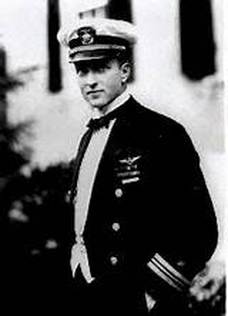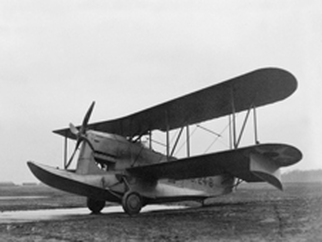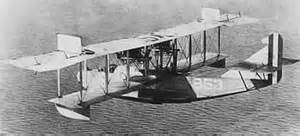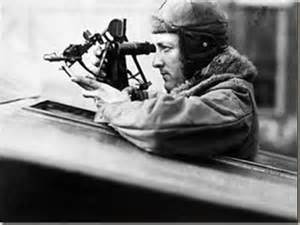
EARLY LIFE
Richard Evelyn Byrd was born in Winchester, VA on October 25, 1888. He was one of three brothers, Tom, Dick, and Harry. The brothers were descendants of one of the First Families of Virginia, their ancestor William Byrd arrived in Virginia from England in 1670. Tom Byrd would go on to run a profitable newspaper and apple growing business. Harry Byrd was elected Governor of Virginia and represented Virginia in the United States Senate for 32 years. But it was Dick who was infected with a sense of adventure and wanderlust that would take him to the ends of the earth.
Dick entered the U.S. Naval Academy at Annapolis in 1908. He was a thin wiry athlete who excelled in sports but this would lead to his undoing. He broke his foot playing football. Then as captain of the gymnastics team he shattered his ankle doing a complicated dismount from the rings. His recuperation caused him to miss so much instruction time that it was suggested he drop back a class. He refused to do this, doubled down in his studies, and Ensign Richard E. Byrd graduated on time in 1912.
After his graduation his ankle had healed but it was still “gimpy”, this caused Byrd to be assigned to cushy jobs. In 1916 he was declared unfit for active duty and placed on retired status at three quarters pay. This caused him to lament in his
book Skyward: “Career ended. Not enough income to live on……temperamentally disinclined for business. A fizzle”. But one thing did go right. In 1915 He married Marie Donaldson Ames; they had known each other since they were children. He didn’t know it yet but this marriage contributed greatly to his future endeavors and successes.
Richard Evelyn Byrd was born in Winchester, VA on October 25, 1888. He was one of three brothers, Tom, Dick, and Harry. The brothers were descendants of one of the First Families of Virginia, their ancestor William Byrd arrived in Virginia from England in 1670. Tom Byrd would go on to run a profitable newspaper and apple growing business. Harry Byrd was elected Governor of Virginia and represented Virginia in the United States Senate for 32 years. But it was Dick who was infected with a sense of adventure and wanderlust that would take him to the ends of the earth.
Dick entered the U.S. Naval Academy at Annapolis in 1908. He was a thin wiry athlete who excelled in sports but this would lead to his undoing. He broke his foot playing football. Then as captain of the gymnastics team he shattered his ankle doing a complicated dismount from the rings. His recuperation caused him to miss so much instruction time that it was suggested he drop back a class. He refused to do this, doubled down in his studies, and Ensign Richard E. Byrd graduated on time in 1912.
After his graduation his ankle had healed but it was still “gimpy”, this caused Byrd to be assigned to cushy jobs. In 1916 he was declared unfit for active duty and placed on retired status at three quarters pay. This caused him to lament in his
book Skyward: “Career ended. Not enough income to live on……temperamentally disinclined for business. A fizzle”. But one thing did go right. In 1915 He married Marie Donaldson Ames; they had known each other since they were children. He didn’t know it yet but this marriage contributed greatly to his future endeavors and successes.
When America entered WWI in 1917 Byrd wanted to get into the fight so he begged the Navy to send him to Pensacola to learn how to fly. They agreed. When he arrived he heard a shout , looked up and saw a small plane fluttering in the air before making a perpendicular dive into the water killing the pilot. Byrd asked a fellow officer if that kind of thing happened often. The reply was yes, sometimes two or three times a day. But that didn’t deter Byrd. When he went up on his first flight and looked out over the vast expanse of land and water below him and he knew he was hooked. He flew his first solo flight after only six hours of dual instruction. While at Pensacola Byrd was assigned to investigate the cause of airplane crashes. He also experimented with navigational aids to allow pilots to fly over the ocean out of sight of land and to return again safely.
Byrd never fought in Europe during WW I but the Navy did assign him to establish a Navy base in Nova Scotia to be used for anti-submarine warfare. In 1919 after the war Byrd participated in the planning for three Navy NC flying boats to fly across the Atlantic. One of the planes, NC4, made it from
Newfoundland to Portugal in several stages. This was the first flight across the
Atlantic although Byrd was not part of the crew.
Byrd never fought in Europe during WW I but the Navy did assign him to establish a Navy base in Nova Scotia to be used for anti-submarine warfare. In 1919 after the war Byrd participated in the planning for three Navy NC flying boats to fly across the Atlantic. One of the planes, NC4, made it from
Newfoundland to Portugal in several stages. This was the first flight across the
Atlantic although Byrd was not part of the crew.
 One of MacMillan's amphibious planes
One of MacMillan's amphibious planes
In 1925 the National Geographic Society backed a private expedition by Donald MacMillan to take three single engine amphibious airplanes to explore the west coast of Greenland. Admiral William A. Moffett suggested that Dick Byrd should be in charge of the aviation unit. The expedition was plagued by bad weather , days with good flying weather were severely limited, but the planes were able to fly over 30,000 square miles of Greenland and Ellesmere Island most of which had never been seen by man. This taste of Arctic exploration expedition set the stage for Byrd’s North Pole flight the next year.

